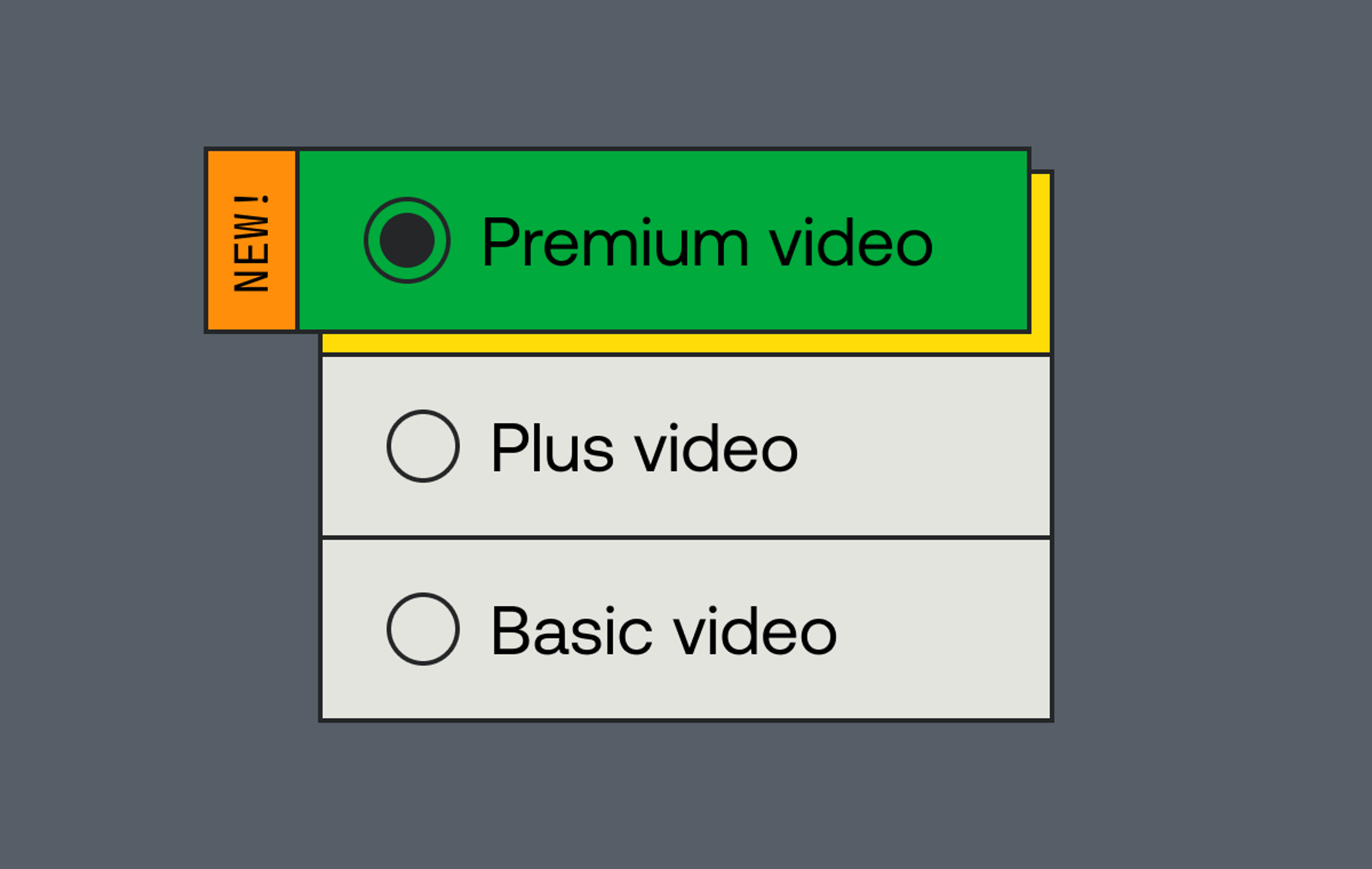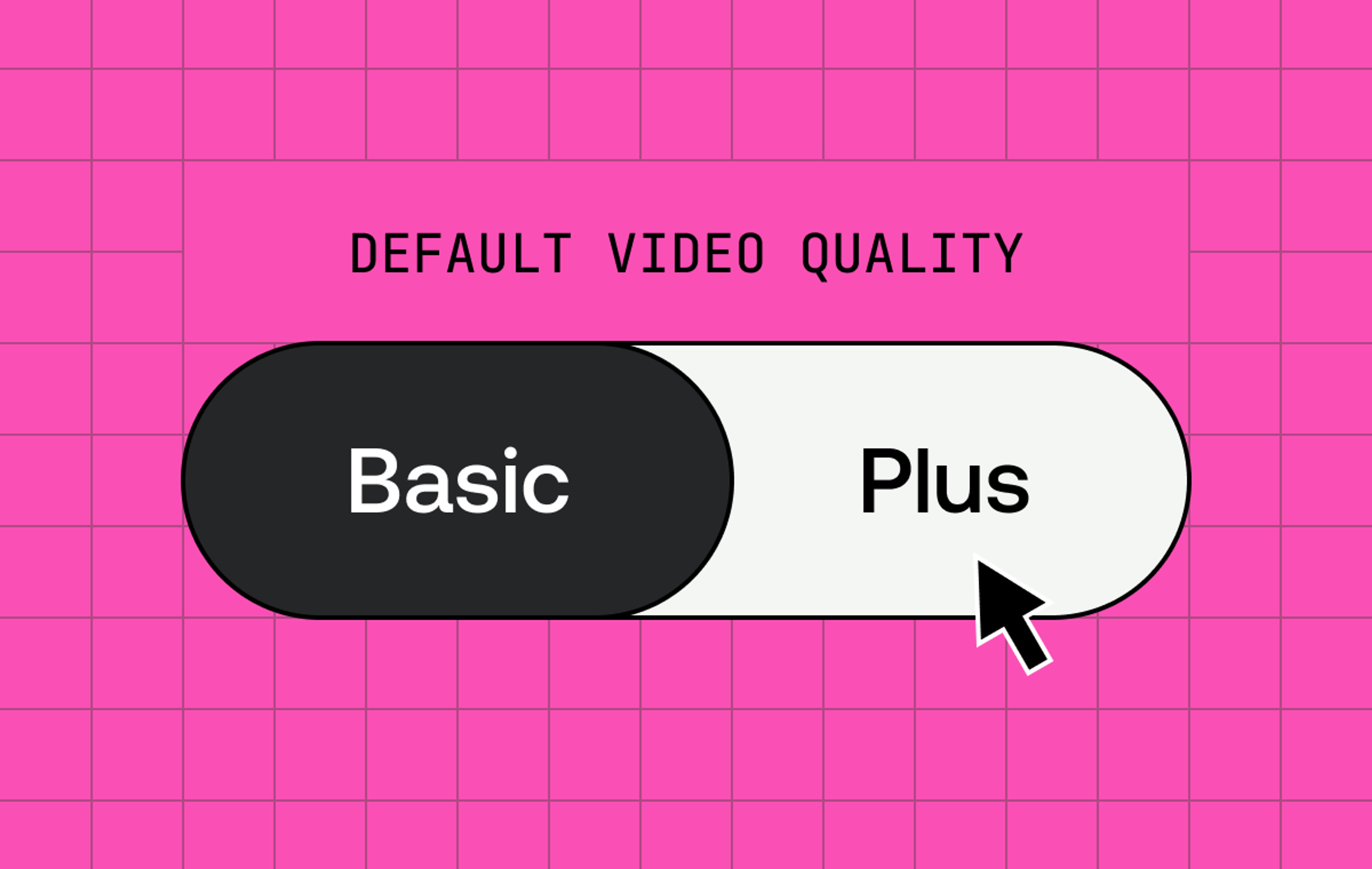“Why video quality matters” might sound like a trivial and pointless question for a blog post, like a slowly pitched softball or bowling with bumper plates. Might as well write a blog post entitled “Why apple pie is good.”
But maybe it’s not that simple.
Aren’t there diminishing returns in video quality? (Raise your hand if you own an 8K TV.)
Netflix has looked great for 10+ years. Does that mean that quality is a solved problem?
If quality is so important, why is so much video watched on 6” displays these days?
What even is “video quality”?
What even is video quality
It turns out “video quality” is a hopelessly vague term that can refer to at least 5 different things.
Encode quality, or fidelity: is a video a faithful reproduction of the original, or was quality lost along the way? My colleague Mike describes this in detail in a great recent blog post (“What is perceptual quality?”). He writes:
“What is perceptual quality (PQ)? It’s a pretty simple concept — it’s how good your content looks compared to the original. We’re not trying to judge whether the content was produced well, if your lighting was good, if your camera was high-end, or anything else like that. It’s just whether the encoding process gives you a video that looks close to the original.”
Compression efficiency: how much quality is squeezed into some number of bits? Encode one video with H.264 and another with AV1, and in order to achieve the same perceptual quality, you’ll need to use 30%+ more bandwidth for the older codec. Does that mean that AV1 has higher quality than H.264? If you’re holding bitrate constant, then: yes. Otherwise: no.
Quality of experience: (QoE): is playback smooth and fast, without errors or buffering?
Psychovisual tricks: Making this even more complicated, perceived quality can sometimes go up in ways that are not faithful to the original content. Things like basic sharpening filters, or advanced AI-based upscaling filters, can be used to make a video look better, at least to some viewers.
Don’t forget audio: Audio is an intrinsic part of most videos and deserves its own (separate) discussion of quality that I won’t cover here. Suffice it to say that high-quality audio is often even more important than high-quality video.
And that’s just in the technical domain. “Video quality” can also refer to the writing, acting, or production value of a video…but that’s out of scope for this post.
Why quality matters
Video quality matters for some reasons that are obvious, and some reasons that are less obvious.
The most obvious reason: high-quality video looks better, and consumers prefer high-quality video. If you’re old enough, you remember the transition from VHS to DVD, or from DVD (480p) to HD (1080p). Each of these transitions was a huge leap forward, to the point where taking a step back and watching lower-quality or lower-resolution content is difficult today. There is a reason you probably felt excited to upgrade to a HD or 4K TV at some point in your life.
Better quality leads to more immersive experiences, deeper emotional connection with the content, better understanding and retention, and reduced viewing fatigue.
There are at least three less obvious reasons why video quality matters, however.
Higher quality leads to better SEO rankings via better backlinks, longer watch times, lower bounce rates, and higher thumbnail quality.
High-quality video is longer-lived. When I started out in the world of streaming video, “Retina displays” didn’t exist and iPhone resolution was 360p. It would have been a reasonable decision back then to produce and stream SD content. But just a few years later, that SD content was obsolete.
Finally, good video quality communicates credibility and professionalism. If you care about brand design, you should care about video quality. A clear, well-produced video reflects positively on the brand or individual, conveying a message of quality and attention to detail. Conversely, poor video quality can undermine the message and make the content appear amateurish.
What you can do about it
On the surface, it’s not that hard.
- Stream video at the right resolution. (720p or 1080p for mobile playback; 1080p or 4K for desktop playback; 4K for TV playback.)
- Use the right number of bits to achieve desired quality.
- Avoid obvious mistakes, like ABR algorithms or signaling that pull the wrong rendition.
- Deliver via one or more high-quality CDNs, with appropriate origin serving and caching.
#1 is straightforward.
#3 and #4 take work. You can’t just pop a video on S3, put a CDN in front of it, and expect it to play smoothly at scale. Or rather: a simple system will work well most of the time, but not all the time. Quality of Experience (rebuffering, slow startup) will suffer.
#2 is properly difficult. Take a simple video and a complex video at the same resolution: the complex video might literally need a 10x-20x higher bitrate to achieve the same perceived quality. If you’re encoding video by hand, this isn’t that hard to do; but doing this in an automated way, at scale, is difficult. This is why the best platforms have moved to various approaches to “per-title encoding” to ensure every video looks good.
If you’re interested in this topic, stay tuned. We’ve invested in delivering video at high quality since the first days of Mux, and we have some exciting advancements that we’ll be announcing soon.



